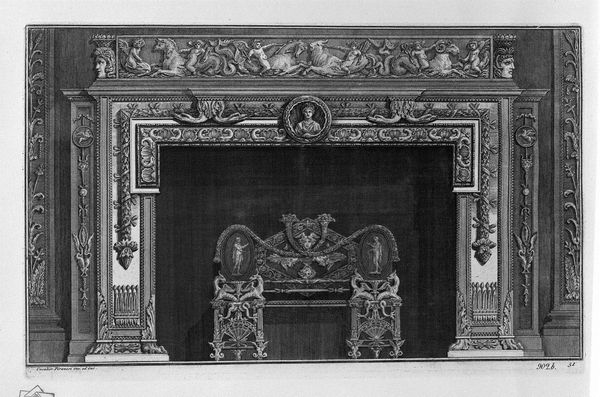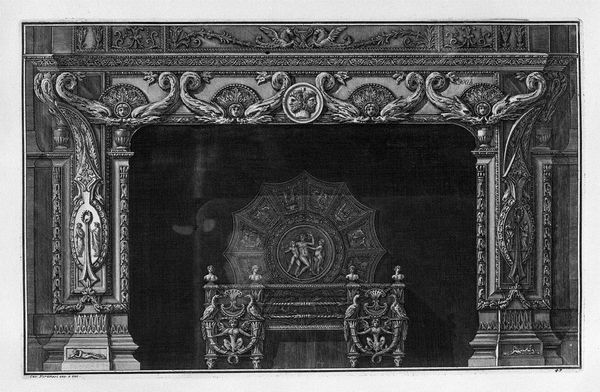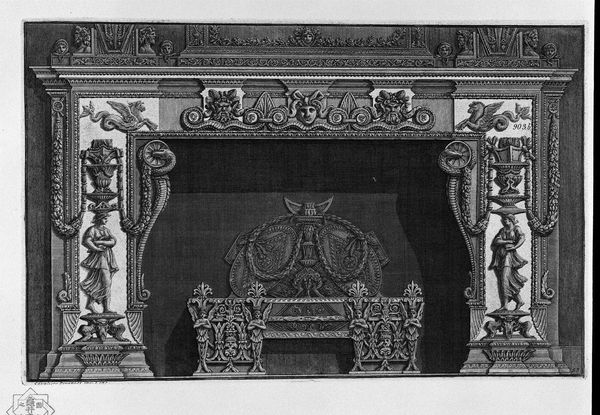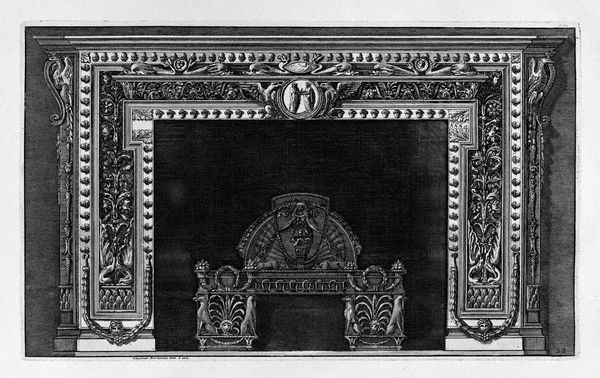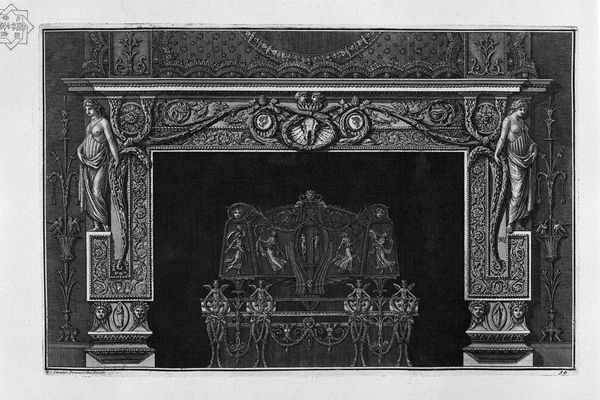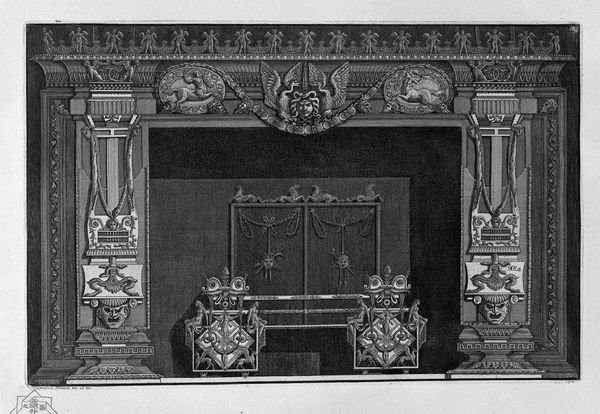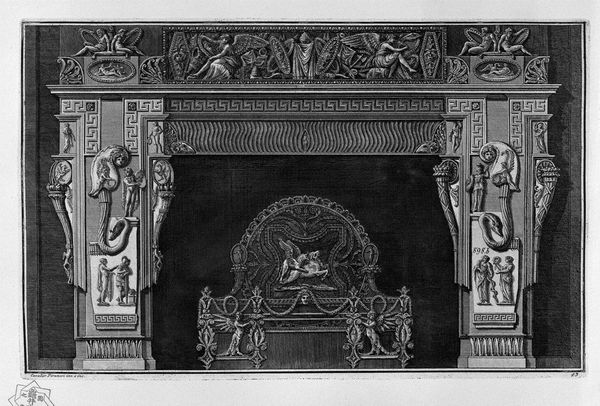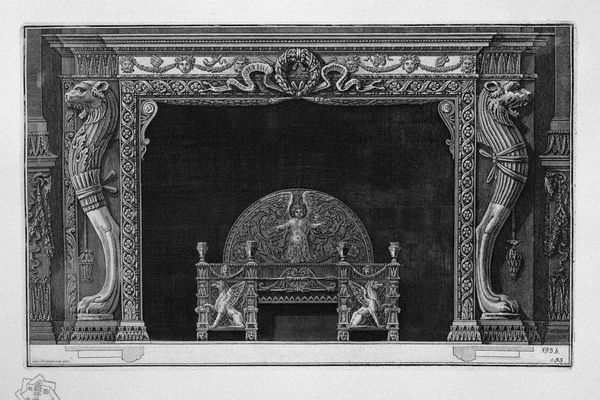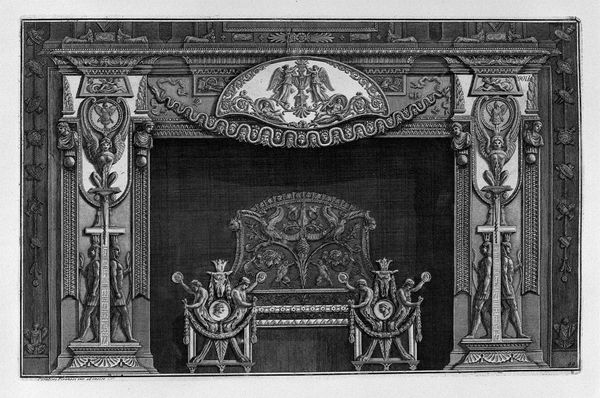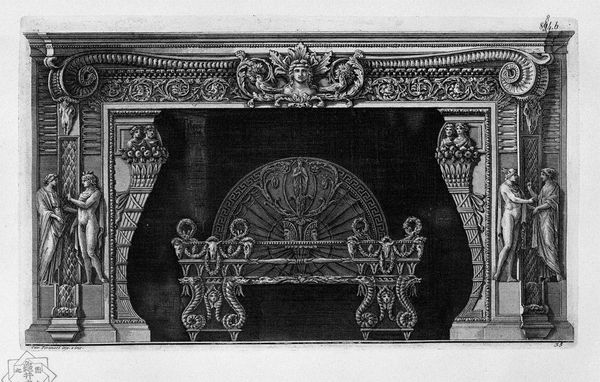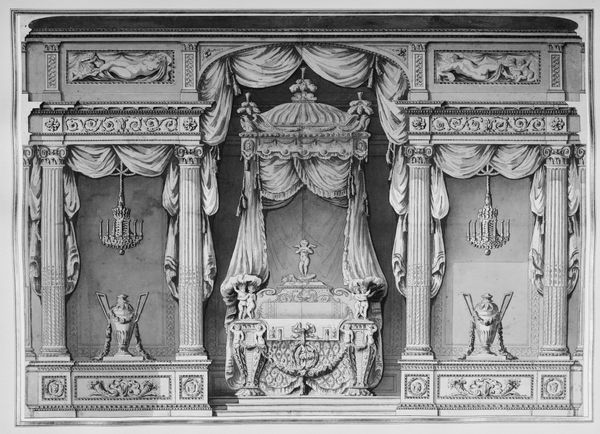
drawing, carving, print, metal, engraving, architecture
#
drawing
#
neoclacissism
#
carving
#
baroque
# print
#
metal
#
sculpture
#
carved
#
engraving
#
architecture
Copyright: Public domain
Curator: Today we're looking at an engraving by Giovanni Battista Piranesi, titled "Fireplace with a Large Ornate Metal Wing." Editor: My first thought is: theatrical. There's a kind of drama in the details of this fireplace. The way everything is rendered makes me imagine an over-the-top opera set. Curator: Indeed! Piranesi, working in the 18th century, straddled Baroque sensibilities with a burgeoning Neoclassical aesthetic, evident here in the meticulous detail of classical motifs infused with drama. For example, consider the heavy emphasis on ornamentation which feels rooted in an elite class that celebrated grandeur in both life and architecture. Editor: Exactly! These classical elements create such rich cultural layers. The helmets topping the entablature feel almost Spartan in their implied military prowess. I also note the integration of serpentine forms. Curator: Piranesi masterfully uses iconic symbols. Consider the eagle, wings outstretched in a protective or imperial gesture. It references ancient Rome, projecting power. Do you see other icons? Editor: Oh, absolutely, like those Sphinx-like harp supports! They resonate with ancient Egyptian echoes as cultural symbols throughout the ancient world. I am so curious: were there social undercurrents at play? Curator: The cultural memory Piranesi conjures isn't simple appropriation; it's a restaging. As Western Imperial powers increasingly made inroads across the globe, Piranesi’s audience may have interpreted this through a lens of political projection: How does power get expressed and solidified through decorative objects and designs? What audiences were being explicitly and implicitly included or excluded through his compositions? Editor: I can't help thinking that the intense detailing could be a commentary on class as well as artistic tradition. Curator: It invites conversations that address political and social power while displaying immense imagination, skillful detail, and enduring fascination. It also represents how material culture transmits encoded cultural memories. Editor: Ultimately, it urges us to look beyond just beauty and utility and acknowledge all of the layers in such an artwork! Curator: Precisely. By embracing multiple perspectives, it transforms our understanding of an 18th-century artist—Piranesi—into a reflection of today.
Comments
No comments
Be the first to comment and join the conversation on the ultimate creative platform.
